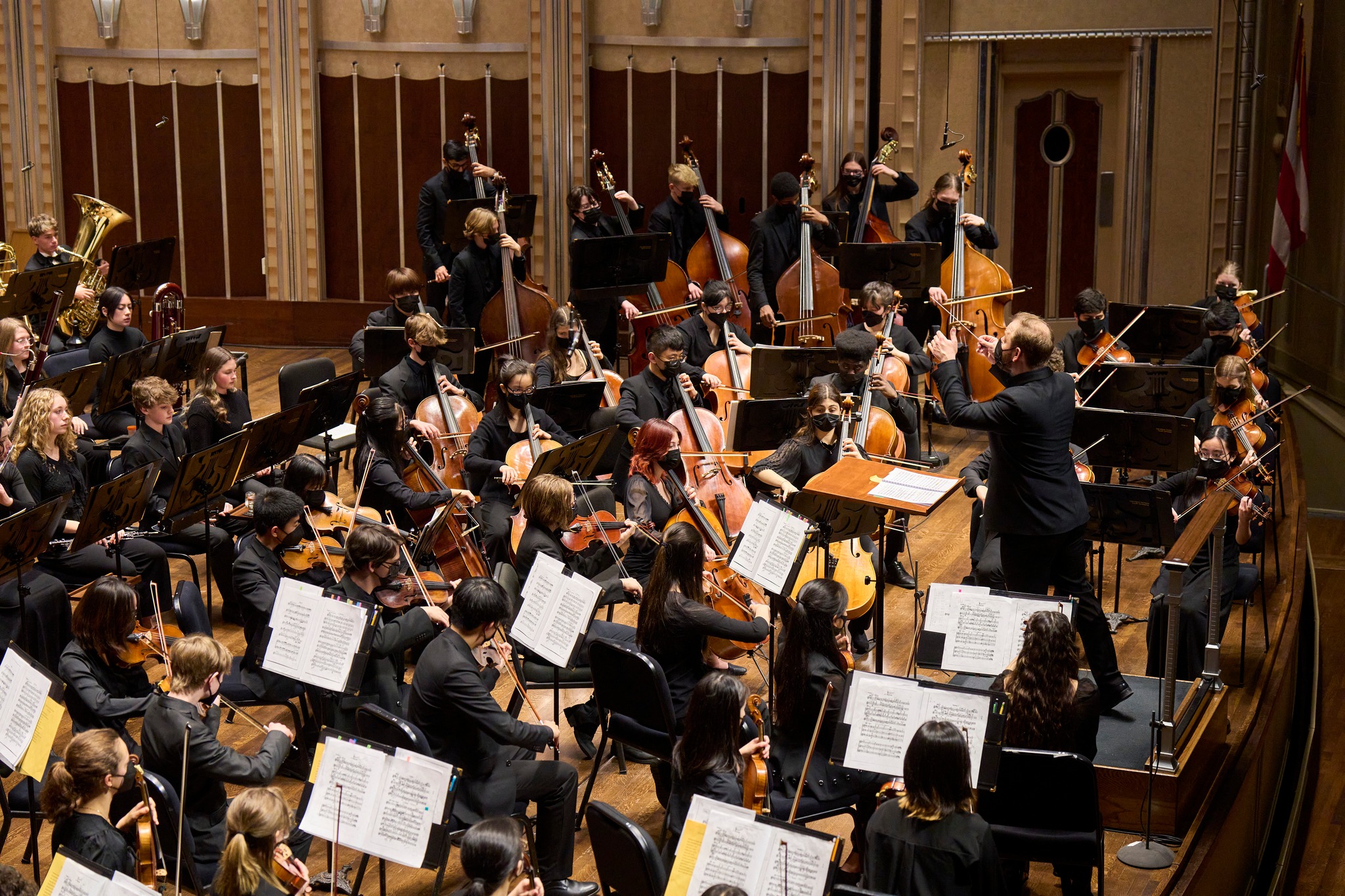by Daniel Hathaway

Midway through his first season with The Cleveland Orchestra, Daniel Reith found himself doing both jobs in a matter of days.
On the weekend of February 5, Reith covered for the ailing Finnish conductor Klaus Mäkelä, who withdrew after the first of a four-concert set, leading works by Andrew Norman, Debussy, and Ravel on short notice (the podium change was announced from the stage by Musical Arts Association president André Gremillet) and without the benefit of rehearsal. Then on February 24, he led the Cleveland Orchestra Youth Orchestra and Youth Chorus in the second concert of their season, which included a Wagner overture, a Schubert mass, and a Brahms symphony.
Replacing the music director — or a much-anticipated guest conductor in Mäkelä’s case — can be perilous. Is it your job to deliver an interpretation as close as possible to what the audience would have heard, or is there room to insert some ideas of your own?
Perhaps luckily for Reith, the structure of Andrew Norman’s Sustain takes care of many interpretational issues. In his program notes, Ian Mercer writes, “As we hurtle to this final, total destruction, the conductor can no longer maintain control; Norman instructs certain wind musicians to go crazy.”
At the other end of the program, once Bolero is launched, its progress is inexorable — a long, steady crescendo is about the only factor that requires conductorial surveillance. Here, Reith chose to begin the piece nearly inaudibly, which gave a bit of extra room for dynamic to grow to that stunning ending where Ravel suddenly jerks the piece into a new key and gives the trombones their turn to go nuts. The long progression of soloists made wonderful contributions to the progress of the piece.
Debussy’s Images presented the greatest interpretational challenge, and here is where a fair assessment of Reith’s concept of the work would require giving him some rehearsal time to establish his personal stamp. Still, he led a perfectly respectable performance, holding it together admirably.
The trouble with youth orchestras is that their members grow up, graduate, and leave the nest on a regular rotation, making it necessary to re-establish ensemble skills and group memory every time there’s a major turnover in personnel.
On February 24, the turnover in the Cleveland Orchestra Youth Orchestra included a new conductor who chose one reliably successful youth ensemble work (the Prelude to Wagner’s Die Meistersinger) and one challenging symphony (Brahms’ First) to show off the ensemble’s progress by the second concert of its season. Traditionally, this winter concert also includes the Cleveland Orchestra Youth Chorus, and Daniel Singer prepared Schubert’s Mass in G for the occasion.
The Schubert was lovely, the chorus well-prepared, attentive, and finely blended, the ensemble between singers and orchestra excellent even though the two groups were separated by a deep swath of empty chairs. The fine trio of guest soloists — soprano Amanda Powell, tenor Ethan Burck, and baritone Seth Hobi — added mature voices to the mix.
You could make a list of beautiful moments that happened this evening, and another list of some basic orchestral skills that Reith needs to work on with his forces this season. Many individual contributions were remarkable (in the Brahms: principal oboe Andrew Kelly, the horn section, and timpanist David Schrembeck). With some extra attention and experience, the kind of wind band so basic to Brahms’ orchestral textures can be achievable with COYO’s young musicians.
Published on ClevelandClassical.com March 8, 2023.
Click here for a printable copy of this article



